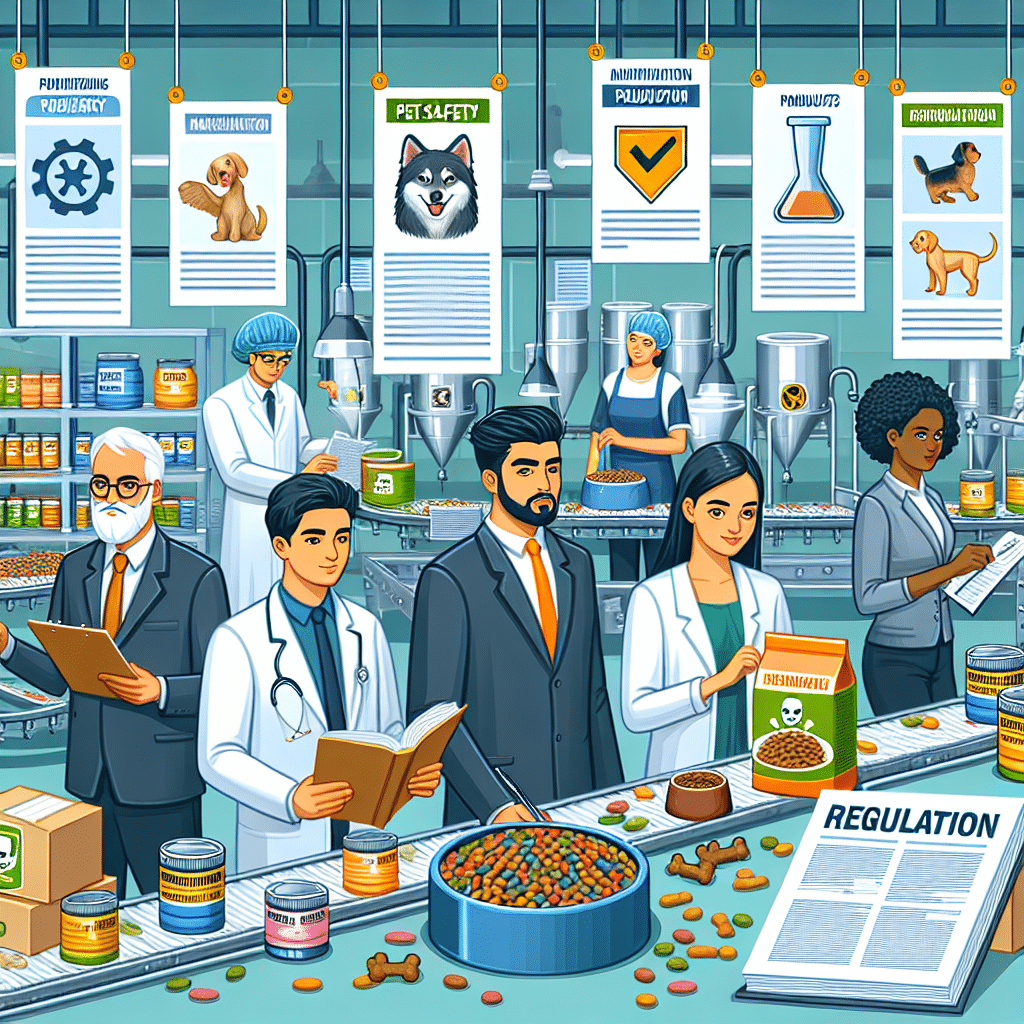Ensuring Pet Food Safety: Navigating Regulations and Standards
-
Table of Contents
- Ensuring Pet Food Safety: Navigating Regulations and Standards
- Understanding Pet Food Regulations
- Key Standards for Pet Food Safety
- Challenges in Pet Food Safety
- Best Practices for Pet Food Manufacturers
- Conclusion: The Importance of Vigilance in Pet Food Safety
- ETprotein: Your Trusted Source for High-Quality Protein Products
Ensuring Pet Food Safety: Navigating Regulations and Standards

The safety of pet food is a critical concern for pet owners and industry stakeholders alike. With the increasing demand for high-quality pet food, understanding and adhering to the regulations and standards that govern pet food safety is essential. This article delves into the complexities of pet food safety, exploring the regulatory landscape, the standards that must be met, and the steps manufacturers can take to ensure the safety and quality of their products.
Understanding Pet Food Regulations
Regulatory bodies around the world have established guidelines and requirements to ensure that pet food is safe and nutritious. In the United States, the Food and Drug Administration (FDA) regulates pet food under the Federal Food, Drug, and Cosmetic Act (FFDCA). The FDA works in conjunction with the Association of American Feed Control Officials (AAFCO), which provides model regulations and nutritional standards for pet food.
In the European Union, pet food is regulated by the European Pet Food Industry Federation (FEDIAF), which sets guidelines for production, labeling, and marketing. Similarly, other countries have their own regulatory frameworks, such as the Pet Food Association of Canada (PFAC) in Canada and the Pet Food Industry Association of Australia (PFIAA) in Australia.
Key Standards for Pet Food Safety
To ensure pet food safety, several standards must be met by manufacturers. These include:
- Nutritional Adequacy: Pet food must meet specific nutritional requirements to ensure that pets receive a balanced diet.
- Ingredient Quality: Ingredients used in pet food must be safe, wholesome, and free from harmful contaminants.
- Manufacturing Practices: Good Manufacturing Practices (GMPs) must be followed to prevent contamination and ensure consistent quality.
- Labeling Requirements: Labels must provide accurate information about the contents and nutritional value of the pet food.
- Traceability: Systems must be in place to trace the origin of ingredients and track the distribution of the final product.
Adherence to these standards is crucial for maintaining the trust of consumers and protecting the health of pets.
Challenges in Pet Food Safety
Ensuring pet food safety is not without its challenges. The global nature of the pet food supply chain introduces risks such as contamination, mislabeling, and the use of unauthorized ingredients. Recent statistics show that pet food recalls are not uncommon, with dozens of recalls occurring each year due to various safety concerns.
Moreover, the rise of raw pet food diets has sparked additional debate over safety, as these products may carry a higher risk of bacterial contamination. Manufacturers must be vigilant in their safety protocols to mitigate these risks.
Best Practices for Pet Food Manufacturers
Pet food manufacturers can take several steps to ensure the safety and quality of their products:
- Implementing Hazard Analysis and Critical Control Points (HACCP) systems to identify and control potential hazards.
- Regularly testing ingredients and finished products for contaminants such as bacteria, heavy metals, and toxins.
- Ensuring that all suppliers meet stringent quality standards and conducting audits to verify compliance.
- Providing comprehensive training for employees on food safety protocols and handling procedures.
- Staying informed about regulatory changes and emerging safety issues in the industry.
By following these best practices, manufacturers can not only comply with regulations but also exceed them, offering peace of mind to consumers.
Conclusion: The Importance of Vigilance in Pet Food Safety
Ensuring the safety of pet food is a complex task that requires a thorough understanding of regulations and standards, as well as a commitment to best practices in manufacturing. By navigating the regulatory landscape and implementing robust safety protocols, manufacturers can protect the well-being of pets and maintain the confidence of pet owners. The key takeaways for ensuring pet food safety include understanding and complying with regulations, meeting established safety standards, addressing challenges proactively, and adopting best practices in manufacturing.
ETprotein: Your Trusted Source for High-Quality Protein Products
In the context of pet food safety, protein is a critical component of a pet’s diet. ETprotein company’s protein products stand out as a reliable choice for manufacturers looking to enhance the nutritional value of their pet food offerings. With a range of organic and non-GMO protein sources, such as rice protein, pea protein, and various seed proteins, ETprotein ensures that their products meet the highest standards of quality and safety.
ETprotein’s commitment to excellence is evident in their meticulous production process, which includes rigorous testing for purity and contaminants. Their protein products are not only safe but also boast a neutral taste, making them an ideal ingredient for various types of pet food. By choosing ETprotein, manufacturers can be confident that they are incorporating top-tier protein sources into their pet food products, contributing to the overall health and satisfaction of pets.
About ETprotein:
ETprotein, a reputable protein and L-(+)-Ergothioneine (EGT) Chinese factory manufacturer and supplier, is renowned for producing, stocking, exporting, and delivering the highest quality organic bulk vegan proteins and L-(+)-Ergothioneine. They include Organic rice protein, clear rice protein, pea protein, clear pea protein, watermelon seed protein, pumpkin seed protein, sunflower seed protein, mung bean protein, peanut protein, and L-(+)-Ergothioneine EGT Pharmaceutical grade, L-(+)-Ergothioneine EGT food grade, L-(+)-Ergothioneine EGT cosmetic grade, L-(+)-Ergothioneine EGT reference grade and L-(+)-Ergothioneine EGT standard. Their offerings, characterized by a neutral taste, non-GMO, allergen-free attributes, with L-(+)-Ergothioneine purity over 98%, 99%, cater to a diverse range of industries. They serve nutraceutical, pharmaceutical, cosmeceutical, veterinary, as well as food and beverage finished product distributors, traders, and manufacturers across Europe, USA, Canada, Australia, Thailand, Japan, Korea, Brazil, and Chile, among others.
ETprotein specialization includes exporting and delivering tailor-made protein powder and finished nutritional supplements. Their extensive product range covers sectors like Food and Beverage, Sports Nutrition, Weight Management, Dietary Supplements, Health and Wellness Products, and Infant Formula, ensuring comprehensive solutions to meet all your protein needs.
As a trusted company by leading global food and beverage brands and Fortune 500 companies, ETprotein reinforces China’s reputation in the global arena. For more information or to sample their products, please contact them and email sales(at)ETprotein.com today.












